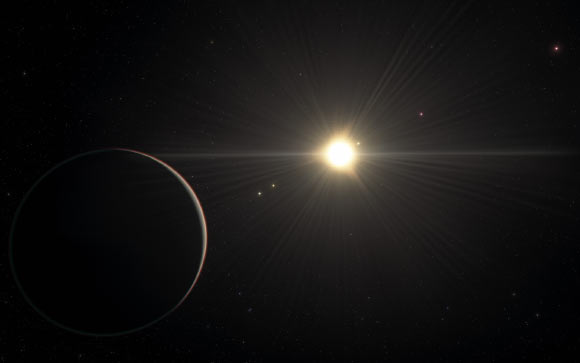The TOI-178 planetary system, a 7.1-billion-year-old system of six planets in the super-Earth to mini-Neptune range, five of which are locked in a rare rhythm around their parent star, could provide important clues about how planets form and evolve.
TOI-178 is a K-type star located approximately 205 light-years away in the constellation of Sculptor.
Otherwise known as TIC 251848941, 2MASS J00291228-3027133 and TYC 6991-00475-1, it harbors at least six transiting planets.
The innermost planet, TOI-178b, completes an orbit in just 1.9 days, while the outermost world, TOI-178g, takes about ten times longer.
They have sizes ranging from about 1 to 3 times the size of Earth, while their masses are 1.5 to 30 times the mass of Earth.
“It appears there is a planet as dense as the Earth right next to a very fluffy planet with half the density of Neptune, followed by a planet with the density of Neptune. It is not what we are used to,” said Dr. Nathan Hara, an astronomer at the Université de Genève.
To investigate the architecture of the TOI-178 system, Dr. Hara and colleagues analyzed data from ESA’s CHEOPS satellite, the ground-based ESPRESSO instrument on ESO’s Very Large Telescope (VLT), and the NGTS and SPECULOOS surveys at ESO’s Paranal Observatory.
The astronomers found that all TOI-178 planets but the one closest to the star are locked in a rhythmic dance as they move in their orbits.
In other words, they are in resonance. This means that there are patterns that repeat themselves as the planets go around the star, with some planets aligning every few orbits.
The five outer exoplanets in the system follow an 18:9:6:4:3 chain of resonance, one of the longest yet discovered in a system of planets. While the second planet from the star completes 18 orbits, the third planet from the star completes 9 orbits, and so on.
In fact, the researchers initially only found five planets in the system, but by following this resonant rhythm they calculated where in its orbit an additional planet would be when they next had a window to observe the system.
“The orbits in this system are very well ordered, which tells us that this system has evolved quite gently since its birth,” said Dr. Yann Alibert, an astronomer at the University of Bern.
“If the system had been significantly disturbed earlier in its life, for example by a giant impact, this fragile configuration of orbits would not have survived.”
The findings were published in the journal Astronomy & Astrophysics.
_____
A. Leleu et al. Six transiting planets and a chain of Laplace resonances in TOI-178. A&A, in press; doi: 10.1051/0004-6361/202039767








